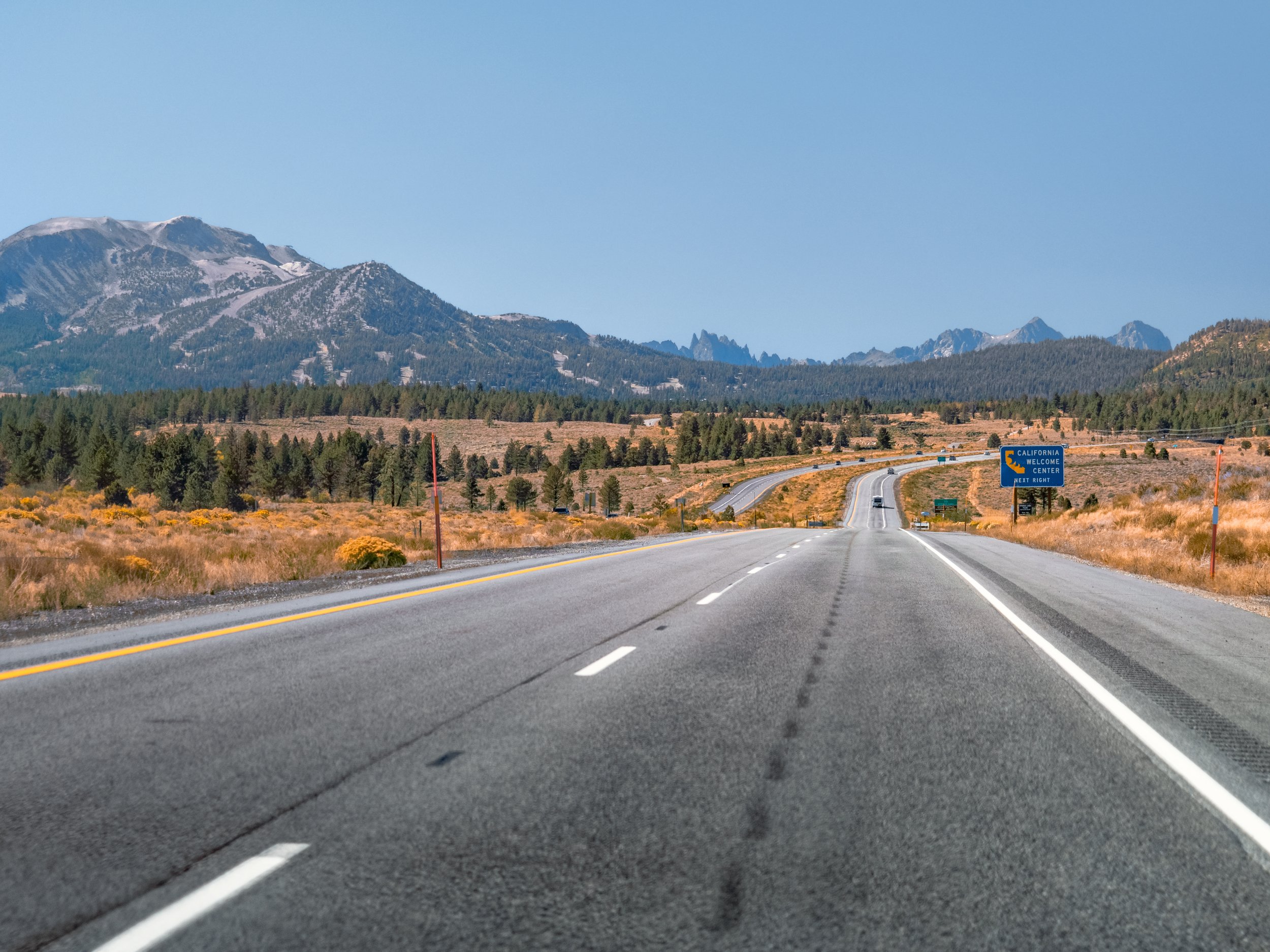Priority Locations Selected for U.S. 395 Wildlife Overcrossing Project
U.S. 395. Photo by Guardian
Contacts:
Mari Galloway, Wildlands Network, (209) 373-9973, mari@wildlandsnetwork.org
John Clerici, Lassen County Transportation Commission, jlfclerici@gmail.com
Lassen County, California – May 12, 2025 – The U.S. 395 Wildlife Overcrossing Project, a collaborative effort between the Lassen County Transportation Commission, Wildlands Network, Mark Thomas Engineering, and Dudek, reached a significant milestone with the selection of six priority locations under consideration for the construction of a new wildlife overcrossing on U.S. 395 in Lassen County. This achievement marks a crucial step in the project’s mission to reconnect essential mule deer migration corridors and enhance road safety along this critical stretch of highway. Community members are invited to share their input on the proposed sites at a public meeting scheduled for Wednesday, May 14 at 7 PM at the Doyle Community Center.
In 2023, the Lassen County Transportation Commission received a $5.4 million grant from the Wildlife Conservation Board to support planning and design efforts for one wildlife overcrossing on U.S. 395. The project has two primary goals: to improve landscape connectivity—particularly for migratory mule deer—across U.S. 395 and to reduce wildlife-vehicle collisions, which pose a serious risk to both animals and motorists. The project area, which includes the section of U.S. 395 from the California-Nevada border to Susanville, bisects critical habitat for mule deer, pronghorn, badgers, mountain lions, and other species. This region also has one of the highest rates of deer-vehicle collisions in California. By improving habitat connectivity through a dedicated wildlife crossing, the project aims to reduce these dangerous collisions, restore migratory pathways, and enhance biodiversity in the region.
“Highway 395 is one of the most dangerous corridors for motorists and wildlife in California,” said John Clerici, Executive Secretary at the Lassen County Transportation Commission. “By identifying these six priority locations, we are advancing solutions to reduce wildlife-vehicle collisions while restoring critical migration routes for species like mule deer. We are excited to engage with the public, hear their feedback on these proposed sites, and work together to create safer roadways for people and wildlife.”
After an extensive scientific modeling process, the project team identified six priority locations—one of which will ultimately be selected for eventual construction. The model considered multiple factors, including wildlife habitat suitability, roadkill records, GPS tracking of key species, and land use analysis, to identify the most effective sites for a wildlife crossing. Final site selection will depend on community feedback and engineering feasibility. This modeling builds on years of California Department of Fish & Wildlife’s deer collaring, Caltrans’ roadkill data collection, and Wildlands Network’s camera and roadkill studies conducted by Pathways for Wildlife, which provided valuable data on wildlife movement patterns and collision hotspots.
The six priority locations identified for potential wildlife crossing infrastructure include:
Bass Hill Wildlife Area
Milford
South of Honey Lake
Doyle Wildlife Refuge
Red Rock
Hallelujah Junction
The six priority locations identified for potential wildlife crossing infrastructures across U.S. 395. Map by Fraser Shilling
“The U.S. 395 Wildlife Overcrossing Project is a critical investment in protecting both public safety and wildlife,” said Mari Galloway, California Program Director of Wildlands Network. “By reconnecting fragmented habitats across U.S. 395, we can support healthy animal populations and reduce the number of dangerous wildlife-vehicle collisions.”
The U.S. 395 Wildlife Overcrossing Project is collaborating with local landowners, wildlife experts, community members, and others to gather feedback on the six priority locations. These discussions, along with detailed engineering feasibility assessments, will determine the most suitable site for construction. Members of the public interested in providing feedback on the proposed locations are invited to attend the Doyle Community Center meeting at 7 PM on Wednesday, May 14.
Research shows that wildlife crossings, when combined with wildlife fencing, can reduce wildlife-vehicle collisions by over 90%. Given the high level of wildlife-vehicle collisions in the area, the project team is also working with Caltrans to advance additional wildlife undercrossings along the U.S. 395 corridor and partnering with local organizations to support habitat restoration for migratory mule deer in Lassen County.
For more information about the U.S. 395 Wildlife Overcrossing Project and future updates, visit https://www.lassenctc.com/wildlife-overcrossing.



